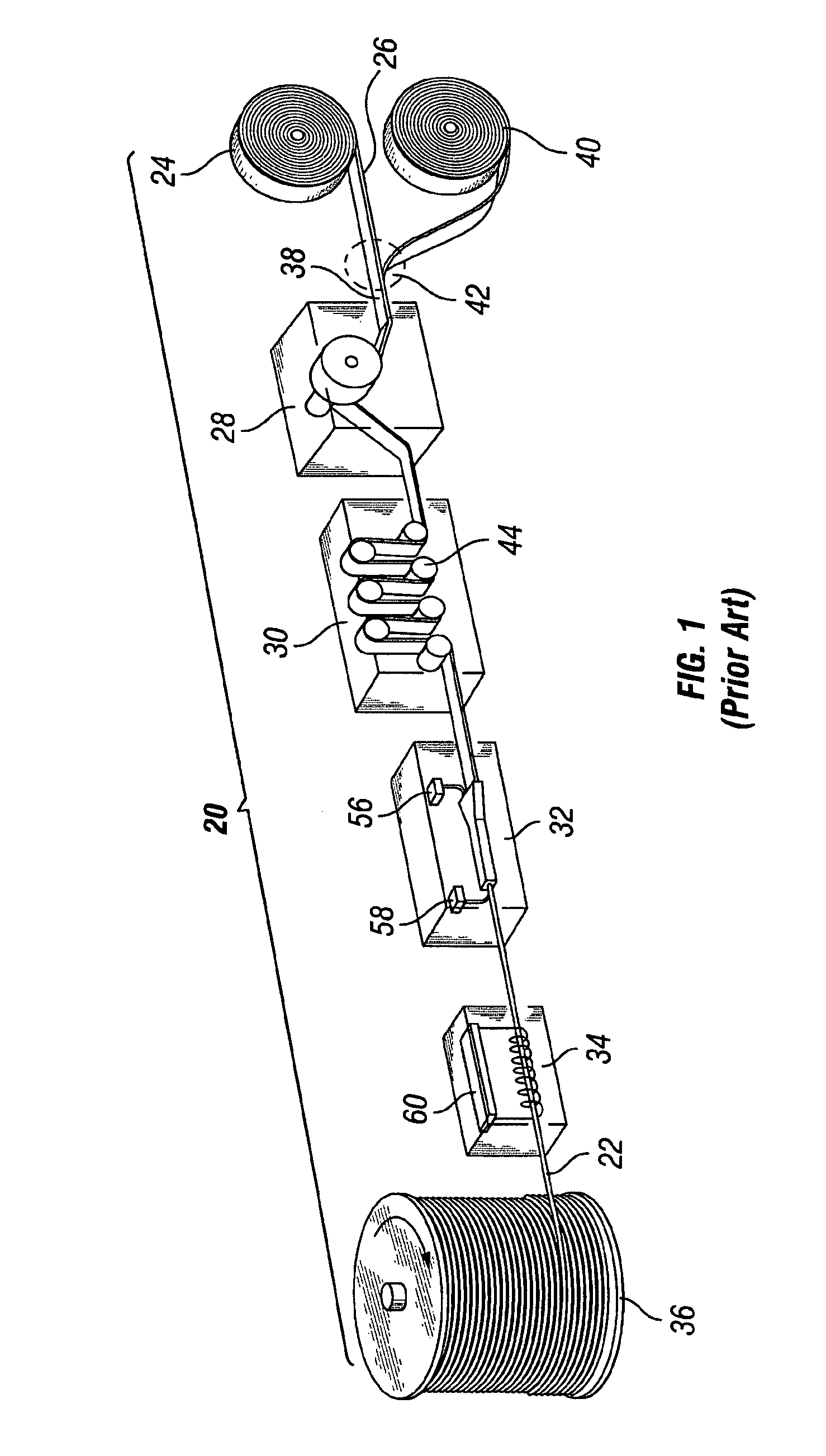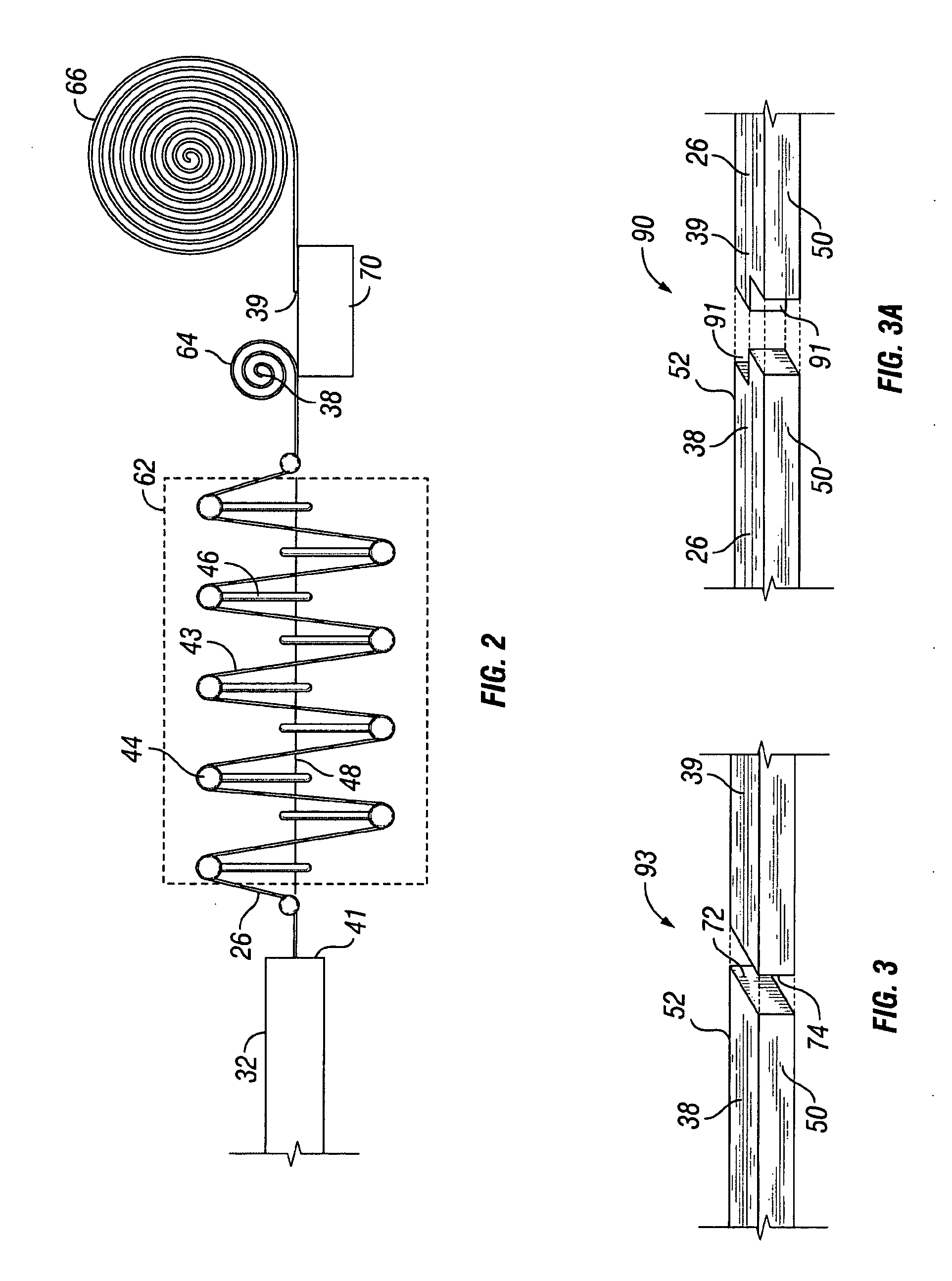Hot reduced coil tubing
a technology of coiling and metallic tubing, which is applied in the direction of metal-working equipment, welding equipment, manufacturing tools, etc., can solve the problems of shortening the production time of ct, and achieve the effects of improving the quality, reliability and resistance of coiling, improving the speed and efficiency of ct manufacturing, and widening the width
- Summary
- Abstract
- Description
- Claims
- Application Information
AI Technical Summary
Benefits of technology
Problems solved by technology
Method used
Image
Examples
Embodiment Construction
[0035] In the prior art system 20 as depicted in FIG. 1, a length of CT 22 could be made by the following process. A first feed coil 24 of flat strip stock 26 is fed to an accumulator 28, then through a conditioner 30 to remove some of the coiling stresses and help flatten the flat strip stock 26. Then the strip stock 26 is fed into a tube mill or tube former 32 following which the tubing is heat treated in a heat treater 34 and, following cooling, is spooled onto a takeup reel 36. The first feed coil 24 of flat stock 26 is fed through the system 20 until the trailing end 38 of the first feed coil 24 is reached. Thereafter, a second feed coil 40 is welded to the first feed coil 24 by means of a bias weld joint 42, and the process continues without interruption until a desired length of CT 22 has been spooled onto the takeup reel 36. The accumulator 28 is positioned so that the tube mill 32 continues to function and tubing made from the leading end and center section of the first fee...
PUM
| Property | Measurement | Unit |
|---|---|---|
| Angle | aaaaa | aaaaa |
| Length | aaaaa | aaaaa |
| Thickness | aaaaa | aaaaa |
Abstract
Description
Claims
Application Information
 Login to View More
Login to View More - Generate Ideas
- Intellectual Property
- Life Sciences
- Materials
- Tech Scout
- Unparalleled Data Quality
- Higher Quality Content
- 60% Fewer Hallucinations
Browse by: Latest US Patents, China's latest patents, Technical Efficacy Thesaurus, Application Domain, Technology Topic, Popular Technical Reports.
© 2025 PatSnap. All rights reserved.Legal|Privacy policy|Modern Slavery Act Transparency Statement|Sitemap|About US| Contact US: help@patsnap.com



